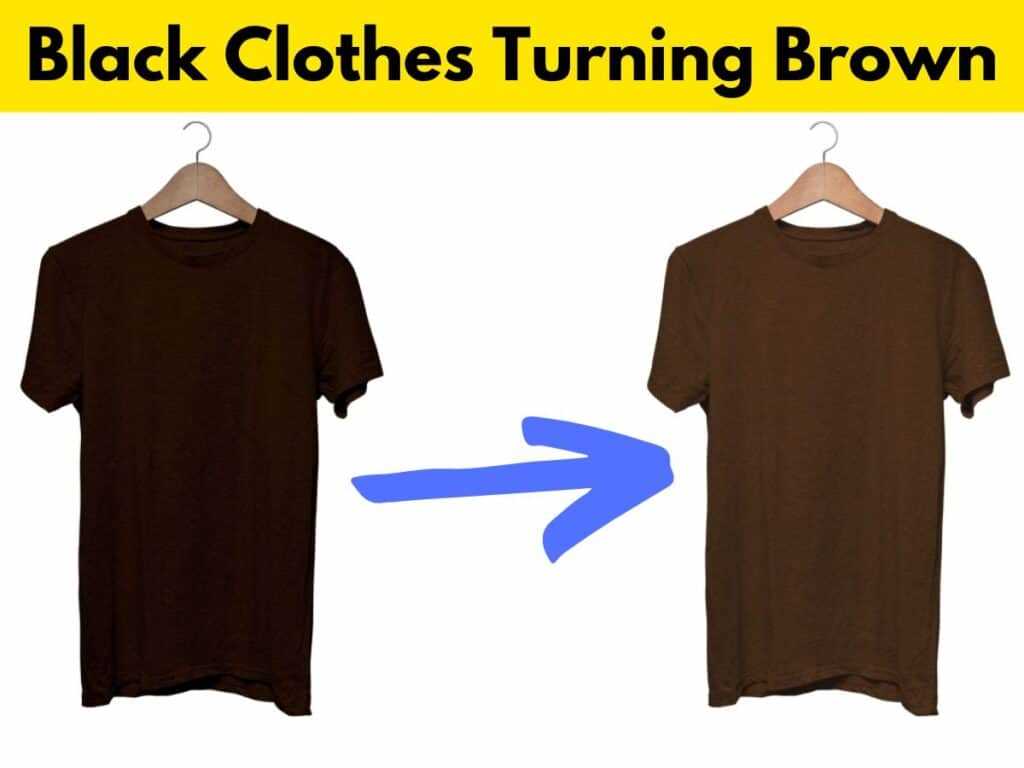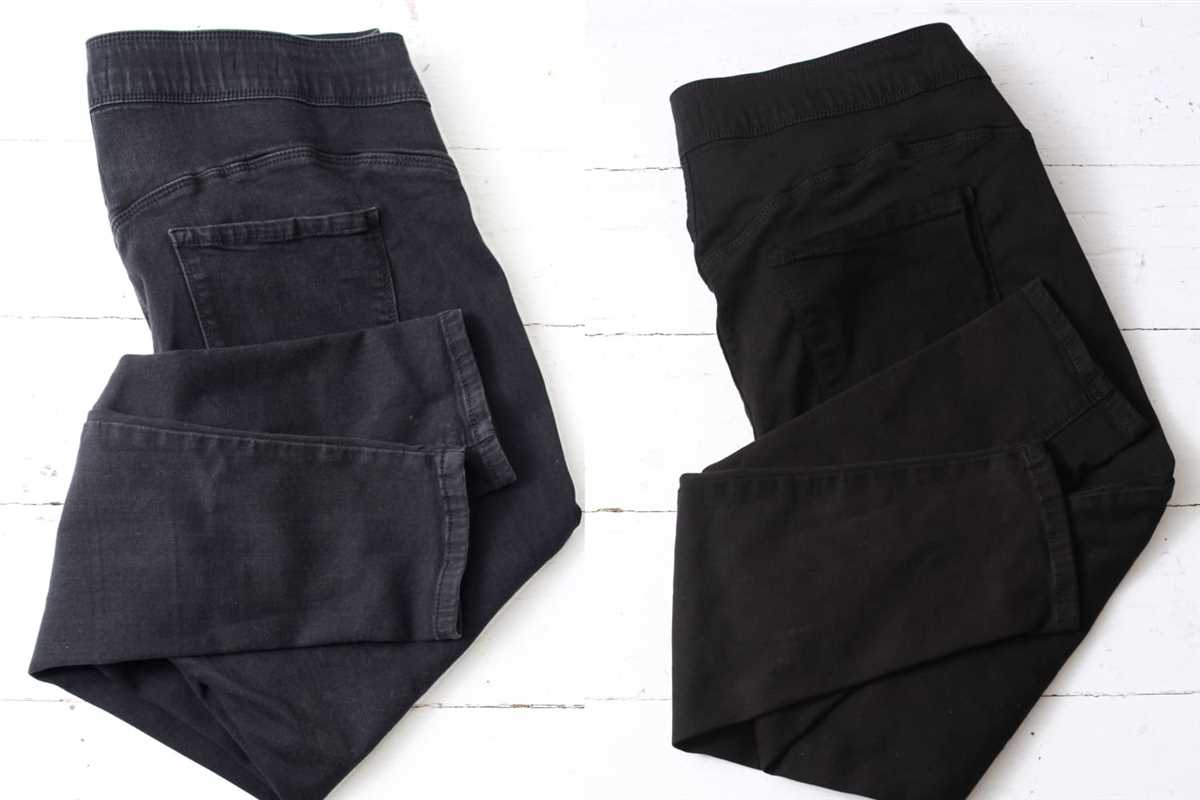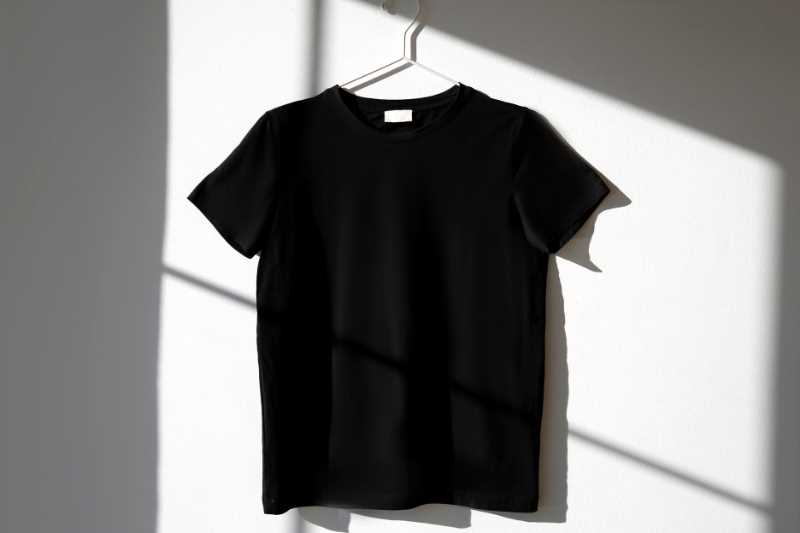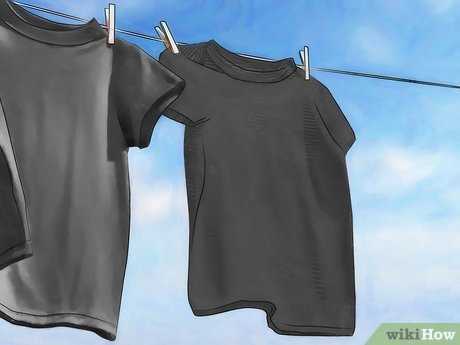
Are you tired of finding your favorite black clothes turning red after a few washes? It’s frustrating when your once sleek and stylish garments lose their color and become faded or even discolored. But what causes this transformation, and is there anything you can do to prevent it?
One of the main culprits behind black clothes turning red is a process called color bleeding. This occurs when the dye used to color the fabric of your black clothes is not properly fixed, causing it to bleed out during the washing process. When this happens, the dye can transfer onto other garments in the wash, resulting in the red staining of your black clothes.
Another reason your black clothes may be turning red is due to a chemical reaction between the fabric and substances present in your laundry detergent or other cleaning products. Certain chemicals can react with the dye used to color your clothes, causing it to change color. This reaction is more likely to occur with harsher cleaning agents, so using gentle and color-safe detergents can help minimize this problem.
Furthermore, improper care and washing techniques can also contribute to the color change in your black clothes. Overwashing, using hot water, and not following the care instructions on the garment can all lead to the dye breaking down and your clothes losing their color. It’s important to always read and follow the care instructions to ensure the longevity of your black clothes.
Why Do Black Clothes Turn Red?
It can be frustrating when your favorite black clothes start to fade and turn red. While it may seem random, there are actually several reasons why this happens. Here are some common causes for the color change:
- Sunlight exposure: The most common reason for black clothes turning red is prolonged exposure to sunlight. The ultraviolet (UV) rays from the sun can break down the dye molecules in the fabric, leading to degradation and fading of the black color. Over time, this can cause the black fabric to appear red.
- Washing with hot water: Washing your black clothes in hot water can accelerate the fading process. Heat can cause the dye molecules to loosen from the fabric, making them more susceptible to fading. Using cold water for washing can help preserve the black color for a longer period of time.
- Low-quality dyes: Some black clothes may be made with low-quality dyes that are not colorfast. These dyes can easily fade or bleed when exposed to different factors like sunlight, washing, or even body sweat. It’s important to choose high-quality black clothing to minimize the chances of color fading.
- Incorrect washing techniques: Improper washing techniques like using too much detergent, rubbing the fabric vigorously, or using harsh chemicals can strip away the dye molecules and cause the color to fade. It’s best to follow the recommended washing instructions provided by the clothing manufacturer to maintain the color of your black clothes.
If you notice that your black clothes are turning red, there are a few steps you can take to prevent further color fading:
- Wash in cold water: As mentioned earlier, washing your black clothes in cold water can help preserve the color. Cold water is gentler on the fabric and reduces the chances of dye molecules loosening and fading.
- Turn black clothes inside out: Turning your black clothes inside out before washing can help protect the outer layer of the fabric from direct contact with water, detergent, and other factors that can cause color fading.
- Use color-safe detergents: Opt for color-safe detergents that are specifically designed to preserve the color of dark clothes. These detergents are formulated to be gentle on fabrics and help maintain the vibrancy of the black color.
- Avoid prolonged sunlight exposure: If possible, try to hang your black clothes in a shaded area when drying them outside. If drying indoors, select an area away from direct sunlight. This will reduce the exposure to UV rays and minimize color fading.
By considering these factors and taking proper care of your black clothes, you can extend their lifespan and keep them looking vibrant for longer.
The Science Behind the Phenomenon

There are several scientific reasons behind the phenomenon of black clothes turning red. These reasons include:
- Chemical Reactions: When black clothes are exposed to certain substances or chemicals, a chemical reaction can occur, causing the fabric to change color. This reaction can be influenced by factors such as humidity, temperature, and the composition of the fabric itself.
- Oxidation: Oxidation is another common reason for black clothes turning red. Exposure to oxygen in the air can lead to the oxidation of certain pigments present in the fabric, resulting in a change of color.
- Washing and Drying: Improper washing or drying methods can also contribute to black clothes turning red. High temperatures, harsh detergents, and rough handling can cause the fabric to fade or bleed, resulting in a change of color.
- Pigment Degradation: Over time, pigments used in black dyes or fabrics can degrade due to exposure to sunlight, chemicals, or other environmental factors. This degradation can alter the color of the fabric, turning it from black to red.
- Contamination: Sometimes, the change in color may not be due to any scientific reason, but rather due to accidental contamination. For example, if a red fabric comes into contact with a black fabric during washing, it can transfer some of its color onto the black fabric, making it appear red.
It is important to note that the actual cause of black clothes turning red may vary depending on specific circumstances and fabric compositions. Therefore, it is always recommended to follow proper care instructions, including using suitable detergents and avoiding exposure to harsh conditions, to maintain the original color of black clothes.
Understanding the Role of Dyes
The color of your clothes is determined by the dyes used in the fabric. Dyes are substances that are applied to materials, such as textiles, to impart color. They can be derived from natural sources, such as plants and minerals, or synthesized chemically.
Types of Dyes:
- Direct dyes: These dyes are water-soluble and can be directly applied to the fabric. They are commonly used for dyeing cotton, rayon, and other cellulosic fibers.
- Acid dyes: As the name suggests, acid dyes are used to dye fabrics that contain protein fibers, such as wool and silk. They require an acidic environment for proper coloration.
- Reactive dyes: These dyes form a covalent bond with the fabric molecules, resulting in excellent color fastness. They are commonly used for dyeing cotton, linen, and other cellulosic fibers.
- Disperse dyes: Disperse dyes are utilized for dyeing synthetic fibers, such as polyester and nylon. They are dispersed into a fine powder or liquid form and then applied to the fabric.
The Dyeing Process:
The dyeing process involves several steps to ensure that the color is evenly absorbed by the fabric. Here is a simplified version of the dyeing process:
- Preparation: The fabric is thoroughly cleaned and prepared by removing any impurities, such as oils and dirt.
- Dye Solution: The dyes are dissolved or dispersed in a liquid solution, which may contain chemicals called mordants that help fix the dye to the fabric.
- Immersion: The fabric is immersed in the dye solution, and the dye molecules penetrate the spaces between the fibers.
- Heat and Time: The fabric is heated to a specific temperature and held for a certain period to allow the dye to bond with the fabric.
- Rinsing and Finishing: The fabric is rinsed to remove any excess dye and then undergoes various finishing processes, such as drying and ironing.
Color Fading and Bleeding:
Over time, the color of dyed fabrics may fade or bleed. Fading occurs when the dye molecules break down or become dislodged from the fabric, leading to a loss of color intensity. Bleeding happens when the dye molecules detach from the fabric and transfer onto other materials, such as other clothes or skin.
Factors Affecting Color Stability:
The color stability of dyed fabrics can be influenced by various factors, including:
- Exposure to UV light: Prolonged exposure to sunlight can cause the color of dyed fabrics to fade.
- Washing and care methods: Harsh washing agents and excessive agitation can contribute to color fading and bleeding.
- Quality of dyes: The quality and type of dyes used can affect the color stability of fabrics.
In conclusion, understanding the role of dyes is important in maintaining the color stability of your clothes. By knowing the types of dyes used, the dyeing process, and the factors that affect color stability, you can take appropriate measures to preserve the vibrancy of your black clothes and prevent them from turning red.
How Natural and Artificial Light Affects Color
Have you ever noticed that the color of your black clothes sometimes seems to change under different lighting conditions? This is because both natural and artificial light have an impact on how we perceive color. Let’s explore the surprising ways in which light can alter the appearance of colors.
Natural Light

Natural light, which is primarily made up of sunlight, contains different wavelengths that can affect the way colors are perceived. The color of an object is determined by the wavelengths of light that it reflects. When natural light shines on an object, some wavelengths are absorbed while others are reflected. The wavelengths that are reflected back to our eyes are what we perceive as the object’s color.
However, the color of natural light can change throughout the day due to the angle at which sunlight hits the Earth’s atmosphere. In the morning and evening, when the sun is lower in the sky, natural light tends to have a warmer and reddish hue. This can make colors appear more vibrant and saturated.
On the other hand, during the middle of the day when the sun is higher in the sky, natural light can have a bluish tint. This cooler light can make colors appear brighter and more washed out. So, the time of day and the angle of the sun can significantly impact how colors appear under natural light.
Artificial Light
Artificial light sources, such as incandescent bulbs, fluorescent lights, and LED lights, also play a role in how colors are perceived. Unlike natural light, which contains a broad spectrum of colors, artificial light sources emit light of specific wavelengths.
For example, incandescent bulbs emit warm light similar to the color of natural light during sunrise or sunset. This can make colors appear more accurate and true to their actual hue. In contrast, fluorescent lights emit cool white light, which can make colors appear slightly bluish or greenish.
LED lights, on the other hand, come in a variety of color temperatures. They can produce both warm and cool light depending on the specific LED bulb. This versatility allows for more control over the appearance of colors in various lighting situations.
Tips for Choosing Colors
Considering how natural and artificial light can affect color perception, here are some tips to keep in mind when choosing colors for your clothes:
- Try on clothes under different lighting conditions to see how the colors appear.
- Avoid relying solely on store lighting, which can be artificially bright and may not accurately represent how colors will look in natural light.
- Consider the time of day and lighting conditions where you will be wearing the clothes most often.
- Keep in mind that color perception can vary from person to person, so what looks good on one person may look different on another.
By being aware of how natural and artificial light affect color, you can make better choices when it comes to selecting and coordinating your outfits, ensuring that the colors you wear always look their best.
The Impact of UV Rays on Clothing
UV rays, or ultraviolet radiation, have a significant impact on clothing, particularly on the color of dark fabrics. Here are some key factors to consider:
1. Fading
Exposure to UV rays can cause fabrics to fade. This is especially noticeable in dark-colored clothing, such as black, as these colors absorb more light and heat. Over time, this exposure can lead to a loss of color intensity, causing black clothes to appear reddish.
2. Fabric Degradation

UV rays can also cause fabrics to degrade and deteriorate faster. The intense energy from the sun can break down the fibers in the fabric, leading to weakened areas or even holes. This degradation can further contribute to color changes in clothing.
3. Protection
Wearing clothing made from UV-protective fabrics can help mitigate the impact of UV rays. These fabrics are specifically designed to block or absorb UV radiation, providing a layer of protection for your skin and helping to maintain the color of your clothing.
4. Laundering Considerations
The way you wash and care for your clothing can also affect its resistance to UV radiation. Using detergents and fabric softeners that contain UV inhibitors can help reduce fading and preserve the color of your clothes.
5. Sunscreen and Clothing
In addition to wearing UV-protective clothing, applying sunscreen to exposed skin can provide additional safeguards against the harmful effects of UV rays. Sunscreen acts as a barrier, preventing the UV radiation from penetrating your skin and potentially causing damage.
Conclusion

UV rays can have a significant impact on the color and longevity of clothing, particularly dark fabrics. Choosing UV-protective clothing, caring for your garments properly, and using sunscreen can help mitigate these effects and ensure your black clothes stay black for longer.
Exploring the Effect of Artificial Lighting
Artificial lighting plays a significant role in our daily lives, affecting not only our visibility but also the appearance of the colors around us. One interesting phenomenon to explore is the effect of artificial lighting on the color of black clothes, which sometimes appears to turn red.
Reasons behind the Color Change

- Color Filters: Some artificial lighting, such as fluorescent or LED lights, emit a spectrum of light that is not evenly distributed. These lights often have certain color filters that can make certain colors appear differently. Black fabrics, being highly absorbent, can sometimes absorb certain wavelengths of light, causing them to appear as a different color – in this case, red.
- Reflection and Absorption: Another reason for the color change is the interaction of black fabric with the artificial lighting. Black objects absorb most of the incoming light, and when exposed to artificial lighting, they absorb specific wavelengths in the light spectrum. The remaining light that gets reflected from the fabric can be a mix of colors, including red.
Influence of Light Temperature
Light temperature is an important factor when it comes to the color appearance of black clothes under artificial lighting.
Cool White Lighting: Cool white lighting, which has a higher color temperature, tends to make black clothes look bluish. This is because cool white lights emit more blue light, and black fabrics can reflect some of this light, resulting in a bluish appearance.
Warm White Lighting: Warm white lighting with a lower color temperature can make black clothes appear redder. As warm white lights emit more red light, the black fabric reflects this light and gives the appearance of a reddish color.
Preventing Color Change

- Choosing Lighting: When shopping for artificial lighting, consider the color temperature and the type of light being emitted. Different types of lighting, such as incandescent or halogen, might have a different effect on the appearance of black clothes.
- Opting for Different Fabrics: If you’re concerned about black clothes turning red under artificial lighting, you can opt for fabrics that are less likely to absorb or reflect certain wavelengths. For example, fabrics with a smoother texture or a different composition might exhibit a lesser color change under certain lighting conditions.
- Good Lighting Practices: Lastly, taking into account the placement and direction of artificial lighting can also help minimize the color change. Ensuring proper lighting distribution and avoiding harsh lighting angles can reduce the chances of black clothes appearing red.
Understanding the effect of artificial lighting on the color of black clothes can assist in making informed choices when it comes to lighting selection for different spaces or events. By considering the lighting factors and fabric characteristics, you can mitigate the color change effect and preserve the true appearance of your black clothes.
The Surprising Influence of Temperature
Temperature plays a significant role in the phenomenon of black clothes turning red. Here are a few ways in which temperature can influence this color transformation:
1. Thermal Expansion

When black clothes are exposed to higher temperatures, the fibers in the fabric can expand. This expansion can lead to a change in the arrangement of the molecules in the fabric, causing a shift in the overall color perception. The black color may appear to change into a reddish hue due to the rearrangement of the molecules.
2. Chemical Reactions
Extreme temperature variations can cause chemical reactions to occur within the fabric. These reactions can alter the pigments present in the fabric, resulting in a change of color. For example, the heat can cause oxidation or degradation of certain dyes or pigments, leading to a reddish appearance.
3. Heat-Induced Fading

Repeated exposure to high temperatures can cause the pigments in black clothes to fade. Over time, this fading can result in a color shift from black to red. The intensity of the heat and the duration of exposure can directly impact the rate at which the color fades.
4. Sunlight and Heat

Both sunlight and heat can contribute to the transformation of black clothes into a reddish hue. The combination of UV radiation from sunlight and high temperatures can cause chemical reactions in the fabric, specifically affecting the pigments responsible for the black color. This combination can lead to color changes, including the appearance of a red shade.
5. Clothing Care
The way black clothes are washed and dried can also affect their color. Excessive heat during washing or drying can cause color fading, making the black clothes appear reddish. It is important to follow the care instructions provided by the manufacturer to maintain the color of black clothes.
| Factors Influencing Color Change | Effect |
|---|---|
| Thermal Expansion | Arrangement of molecules changes, leading to a color shift |
| Chemical Reactions | Alteration of pigments due to heat-induced reactions |
| Heat-Induced Fading | Gradual fading of pigments result in color change |
| Sunlight and Heat | Combined effect of UV radiation and high temperatures on pigments |
| Clothing Care | Improper washing or drying can cause color fading |
It is important to note that these factors may not be the sole cause of the color transformation, but they can certainly contribute to the phenomenon observed in black clothes turning red.
FAQ
Why do black clothes turn red?
Black clothes can turn red due to a process called dye bleeding. This can happen when the black fabric contains a red dye as a secondary component, which can be released when exposed to certain conditions such as heat, moisture, or friction.
What causes dye bleeding in black clothes?
Dye bleeding in black clothes can be caused by a variety of factors including poor-quality dyes, improper dyeing techniques, and insufficient fixation of the dyes during the manufacturing process. Additionally, washing clothes in hot water or exposing them to excessive moisture can also contribute to dye bleeding.
Are there any ways to prevent black clothes from turning red?
There are several steps you can take to prevent black clothes from turning red. Firstly, always follow the care instructions on the clothing label, which may include washing instructions to help maintain the color. Secondly, wash dark-colored clothes separately from lighter ones to avoid color transfer. Finally, consider using cold water and a gentle cycle when washing black clothes to minimize the risk of dye bleeding.
Can black clothes be restored to their original color after turning red?
In some cases, it may be possible to restore black clothes to their original color after they have turned red. The best approach will depend on the specific fabric and dye used. It’s a good idea to consult a professional cleaner or follow the care instructions provided with the garment. They may recommend using color-safe bleach or specialized color-removing products to help restore the black color.












